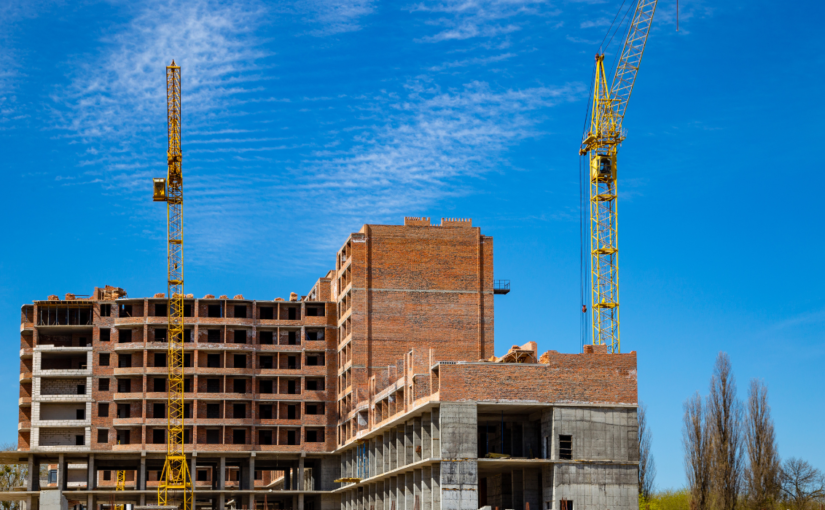back
How to plan for the end of a construction loan and the transition to a permanent mortgage.
01-2023

Getting a construction loan is just the first step in the process when buying commercial real estate. That loan will eventually need to be repaid and converted into a permanent mortgage. For this transition to go smoothly and successfully, preparation is essential.
It’s crucial to first comprehend the distinction between a construction loan and a permanent mortgage. A construction loan is a brief loan used to pay for building or remodeling expenses for commercial properties. The construction loan is repaid and replaced with a permanent mortgage once the building is finished and ready for habitation.
It can be difficult and time-consuming to switch from a construction loan to a permanent mortgage. Working with a reputable lender who has knowledge of commercial real estate financing and can help you navigate the process is crucial.
Following are some crucial actions to plan for when switching from a construction loan to a permanent mortgage for commercial properties:
- Make sure you comprehend the conditions of your construction loan, including the interest rate, the repayment schedule, and any requirements that must be satisfied before the loan can be converted to a permanent mortgage.
- Review the revenue and costs for your property: You must show that the property will be able to bring in enough money to cover the mortgage payments before you can obtain a permanent mortgage. To make sure you’ll be able to meet these requirements, examine the income and expenses associated with your property.
- Obtain a rating: The loan-to-value ratio (LTV) for a permanent mortgage is calculated using an appraisal, a third-party evaluation of a property’s value. You must have the property appraised before you can obtain a permanent mortgage.
- Check your lender’s requirements: When it comes to permanent mortgages, each lender has different requirements. Make sure you can meet the requirements of your lender by reviewing them.
- Examine the terms of your permanent mortgage, including the interest rate, the repayment schedule, and any conditions that must be satisfied before the loan can be approved, once you have found a lender.
- Prepare your paperwork: When applying for a permanent mortgage, your lender will require a number of different documents from you. Financial statements, tax returns, and other records proving your capacity to pay back the loan may be among them.
- Close on the permanent mortgage: After finishing the aforementioned steps, the permanent mortgage must be closed. Typically, this entails agreeing to the terms of a mortgage contract, paying closing costs, and delivering any additional paperwork that the lender might need.
- Before you obtain a construction loan or a long-term mortgage, take into account your exit strategy. This entails considering your future plans for selling or refinancing the property. This will assist you in selecting the best loan type and lender for your long-term needs.
- Compare the terms and rates of various lenders after conducting thorough research on each one. Some lenders might provide better terms and rates than others because not all lenders are created equally. This is why it’s crucial to compare lenders and find the best one for your particular circumstance.
- Hire a commercial real estate lawyer: A commercial real estate lawyer can ensure a smooth transition from a construction loan to a long-term mortgage. Before closing on the permanent mortgage, you can review your loan documents with the assistance of an attorney to ensure that everything is in order. They can also assist you in negotiating better terms and prices.
The process of switching from a construction loan to a long-term mortgage can take a few months, it’s important to remember. Planning ahead is essential, and the procedure should be started well before your construction loan expires. You’ll have plenty of time to consider your lender’s requirements, prepare your paperwork, and close on the permanent mortgage because of this.
In order to ensure a smooth and successful outcome, preparation for the termination of a construction loan and the switch to a permanent mortgage for commercial properties is essential. You’ll be well on your way to securing a permanent mortgage and achieving your investment goals by comprehending the terms of your construction loan, examining your property’s income and expenses, reviewing an appraisal, reviewing your lender’s requirements, thinking about your exit strategy, looking into various lenders, and hiring a commercial real estate attorney. It’s crucial to get the process started well in advance, to understand the steps and requirements in detail, and to collaborate closely with a reputable lender who has experience financing commercial real estate. The switch from a construction loan to a permanent mortgage can be smooth with the right planning and preparation, positioning you for long-term success.
F2H Capital Group is a debt advisory firm specializing in negotiating the best terms for your commercial real estate projects. The company offers a range of financial products and services, including fixed loans, bridge loans, and construction loans across all asset types. Please contact us for any of your financing needs.

